According to the Organization for Economic Co-operation and Development (OECD), India is at number 15 in the world in terms of total venture capital/private equity (VCPE) investments received in 2015, with the US in the top spot. There is a ton of media about why investments are slowing down and it is a blood bath reminiscent of the nuclear winter of 2000. Here are 10 secular trends that support the argument that investments will increase and will propel India to be in the top 10 within the next five years:
1) Investments in 4G LTE will have at least 2X returns as compared to those in 2G/3G
The $87 billion invested between 2000 and 2014 in 2G and 3G has led to increase of the Telecom sector from $14 billion (1.9% of India’s GDP) in 2005 to $118 billion (6.1% of India’s GDP) in 2014.
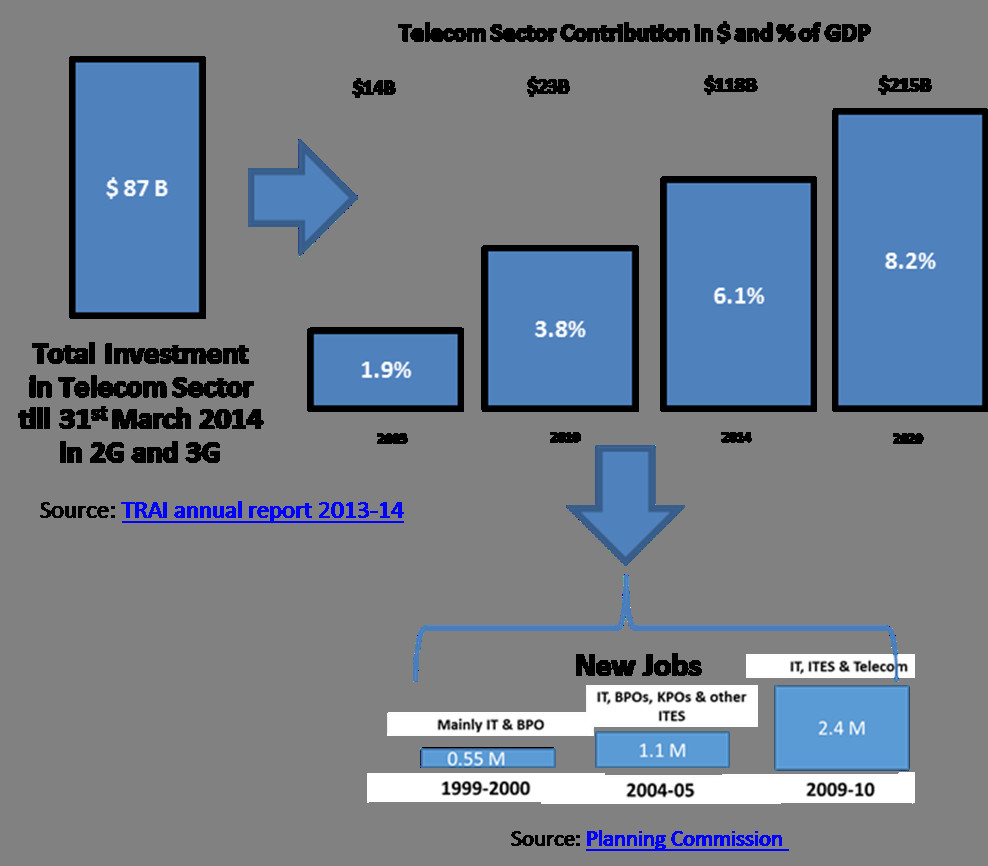
$35 billion has been invested in 4G LTE. NASCOM is forecasting that Telecom and new age industries (such as e-commerce) will create 7.7 million new jobs by 2020. According to McKinsey Global Institute, the broadband investment could increase the Indian economy by three to six times by 2022.
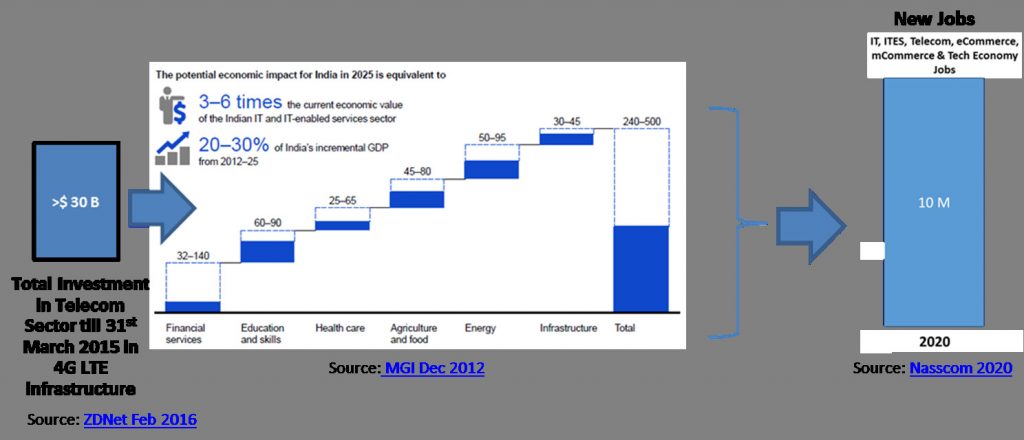
2) 4G smartphones will outsell feature phones in 1 year
As costs of 4G smartphones keep dropping (more than 50% of smartphones shipped in 2015 cost less than $100) and demand keeps rising, smartphones will outsell feature phones.
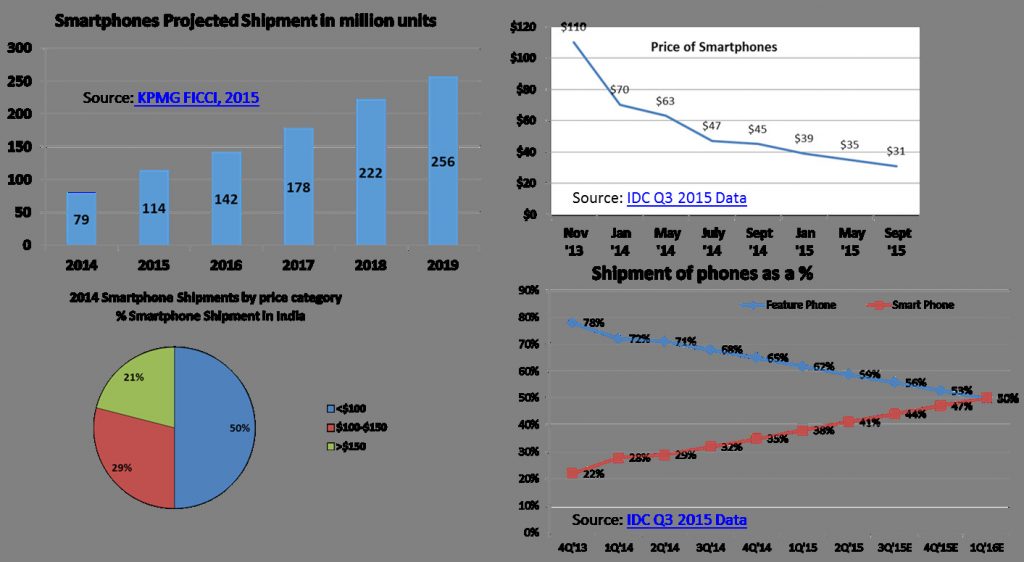
3) Smartphones will change the telecom business model
Mobile data plans are predominantly post-paid in contrast to voice plans which are mostly pre-paid. 1GB of mobile data is ₹250 versus ₹50 for 1GB of fixed broadband and prices are falling fast. Switching from prepaid to postpaid models means that telecom companies have to know their customers and treat them better. Data revenue will overtake voice and SMS revenue in three years and mobile advertising related revenue will become significant with the rise in the app economy.

4) Young and literate India will force digitization of financial services
Of 1.2 billion Indians, two thirds are under 35 years old and mobile first. With better connectivity financial inclusion has increased to 571 million bank account holders in 2015 compared to 235 million in 2011. The electronic payment infrastructure (ATMs and POS terminals) has doubled in size since 2011. Mobile wallets have clocked 255 million transactions in FY15 compared to 107 million in FY14 and 33 million in FY13. Cashless transactions are enabling e-commerce and m-commerce. Consumer spending is on the rise as easy consumer credit has grown. Most of the loans outstanding have doubled in past 5 years with highest increases seen in the housing, personal and vehicle loans respectively.

5) Ecommerce will level the playing field between urban and rural shopping
There are an estimated 79 million e-commerce users spending roughly $2 billion. The retail industry is undergoing a sea change as more of its unorganized retailers start using e-commerce to reach their customers online. Approximately 65% of the customers placing orders online come from tier 2 and 3 cities and towns. Plus, it is estimated that 35 to 40% of the sellers are today from tier 2 and tier 3 cities and towns. Everything from apparel and footwear to groceries and consumer durables are sold online.
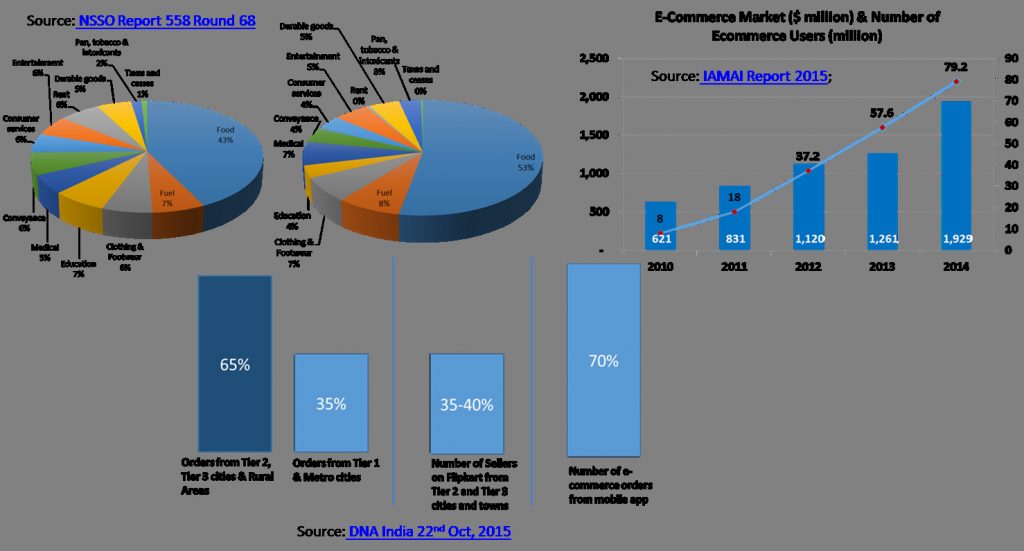
6) Digital distribution of movie and TV content will explode over the next decade
In 2015, an average Indian spent 169 minutes on his/her smartphone and 118 minutes watching TV to get news and entertainment. Despite India being the largest producer (1700 movies in 2014) and consumer of movies (52 billion movie admissions), Indians are vastly underserved as movie watchers. India has seven movie screens per million, compared to 125 in the US and 13 in China. Digital media has a huge opportunity to reach the masses.
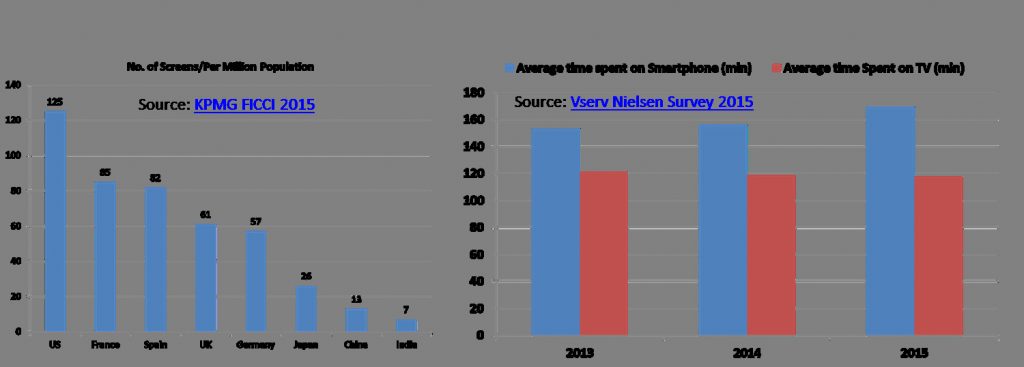
7) Foodtech still remains underinvested with huge upside potential
Food is a huge drain on the Indian consumer’s wallet, with 43% of the income for the urban consumer and 53% for the rural consumer spent on food. The numbers are even greater if cooking fuel is taken into account. Over the last 24 months, 221 startups targeting the food sector have received close to $500 million in funding. The largest investments are in grocery shopping and delivery. Other categories such as online ordering and food preparation have also received funding.
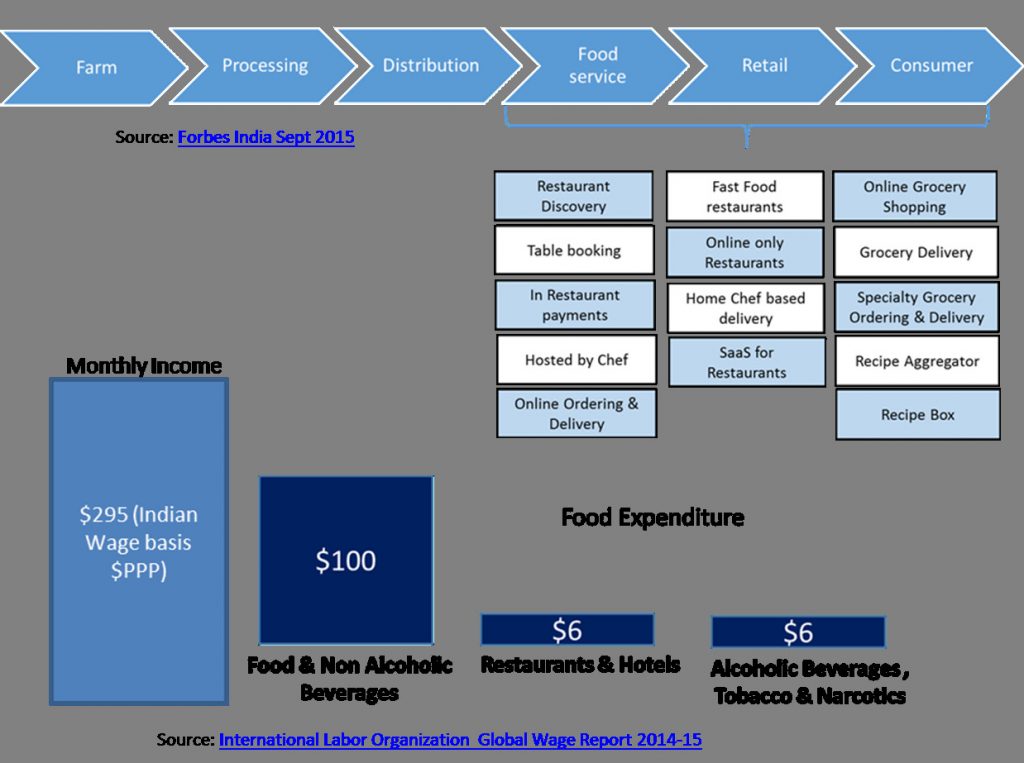
8) Mass urbanization and stretched urban infrastructure will continue to be a major investment opportunity
In 2010, roughly two-thirds of India was rural. By 2050, more than half of India will be urban. This mass urbanization is putting a lot of pressure on urban infrastructure, especially noticeable in transportation, health, housing, and air and water quality. Commuting times in the top metros continue to increase as the infrastructure cannot keep pace with the increasing population and the number of cars sold every year increases (1.88 million in 2014). In 2015 India had the dubious honour of having 13 of the top 20 most polluted cities in the world. The demand for affordable housing in urban areas is also going up.
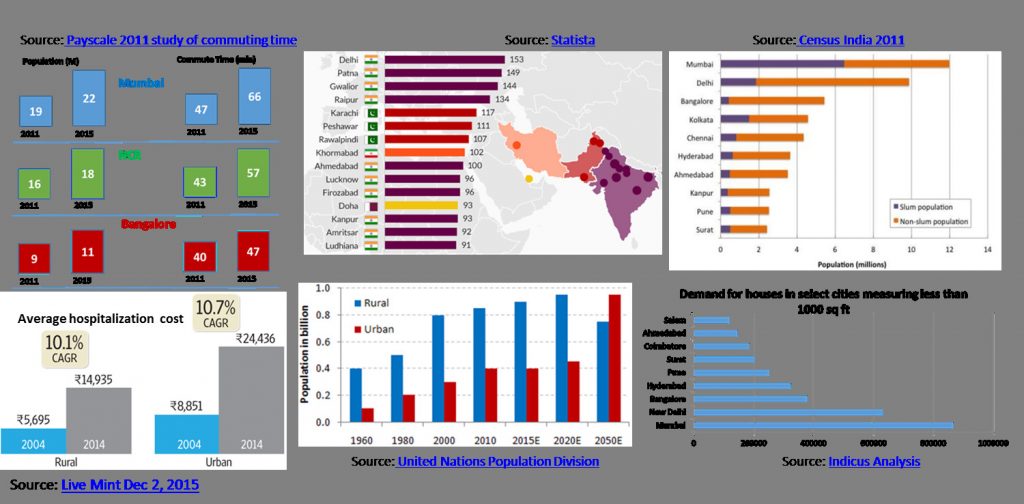
9) A “made in India app” will have >100M downloads in the next 2 years
With proliferation of smart phones, mobile apps are on the rise in e-commerce, digital media, urban transportation, food, health, finance, etc. India is the fourth largest mobile app market in terms of downloads after the US, China and Indonesia. The day when India has a “made in India app” that has over 100M downloads is on the horizon.
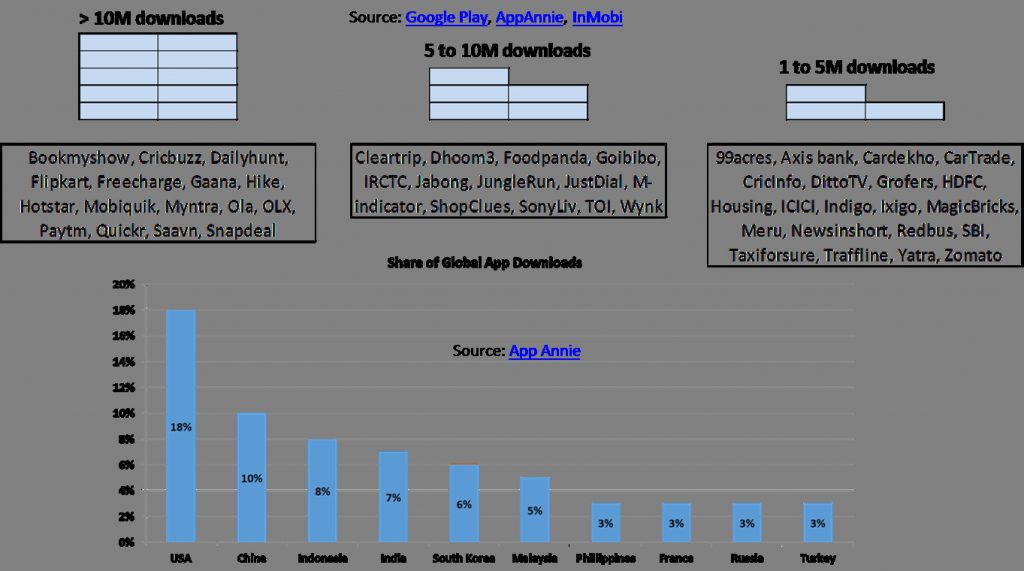
10) Startups are attracting top talent
Private investments in early stage companies (VC) as well as late stage companies (PE) have been rising steadily both in number and investment amount. India has its share of unicorns (to date seven unicorns) in the top global 100 with median age of their founders at 32. These unicorns and their founders serve as role models for entrepreneurs and young professionals. New startups in education, entertainment, finance, food, healthcare, logistics, retail, transportation and tourism are attracting top engineering and management talent. The government is also taking steps to increase the impact of entrepreneurship on the Indian economy by reducing bureaucracy and loosening control.
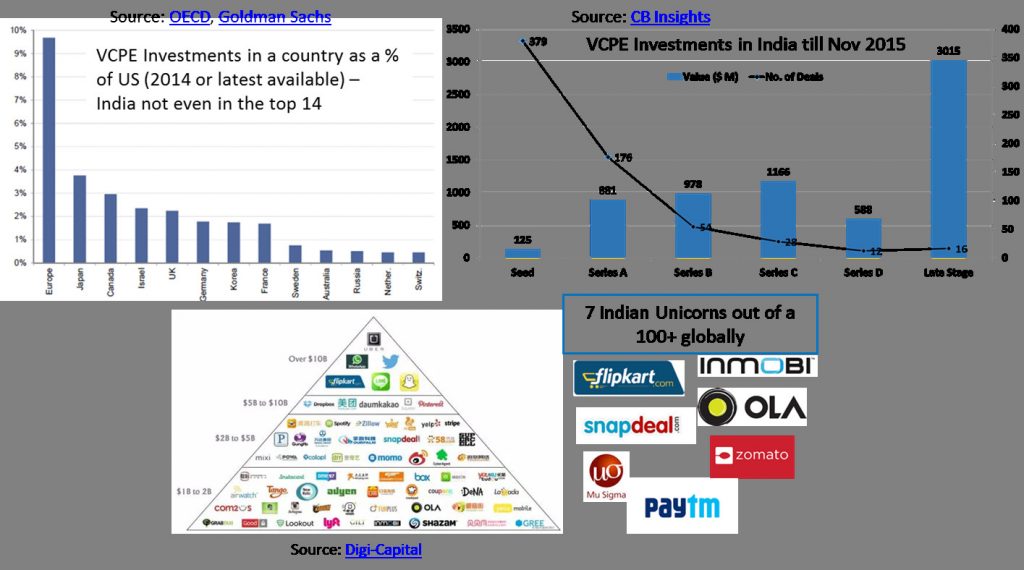
For more information on Aniruddha Nazre
1. https://www.crunchbase.com/person/aniruddha-nazre
2. https://www.instagram.com/aniruddhanazrelive
3. https://businessinsider-ajitnazre.blogspot.com/
4. https://medium.com/@ajitnazre
5. https://kinja.com/ajitnazre
6. https://issuu.com/aniruddhanazre
7. https://ajitnazre62.wixsite.com/ajitnazree
